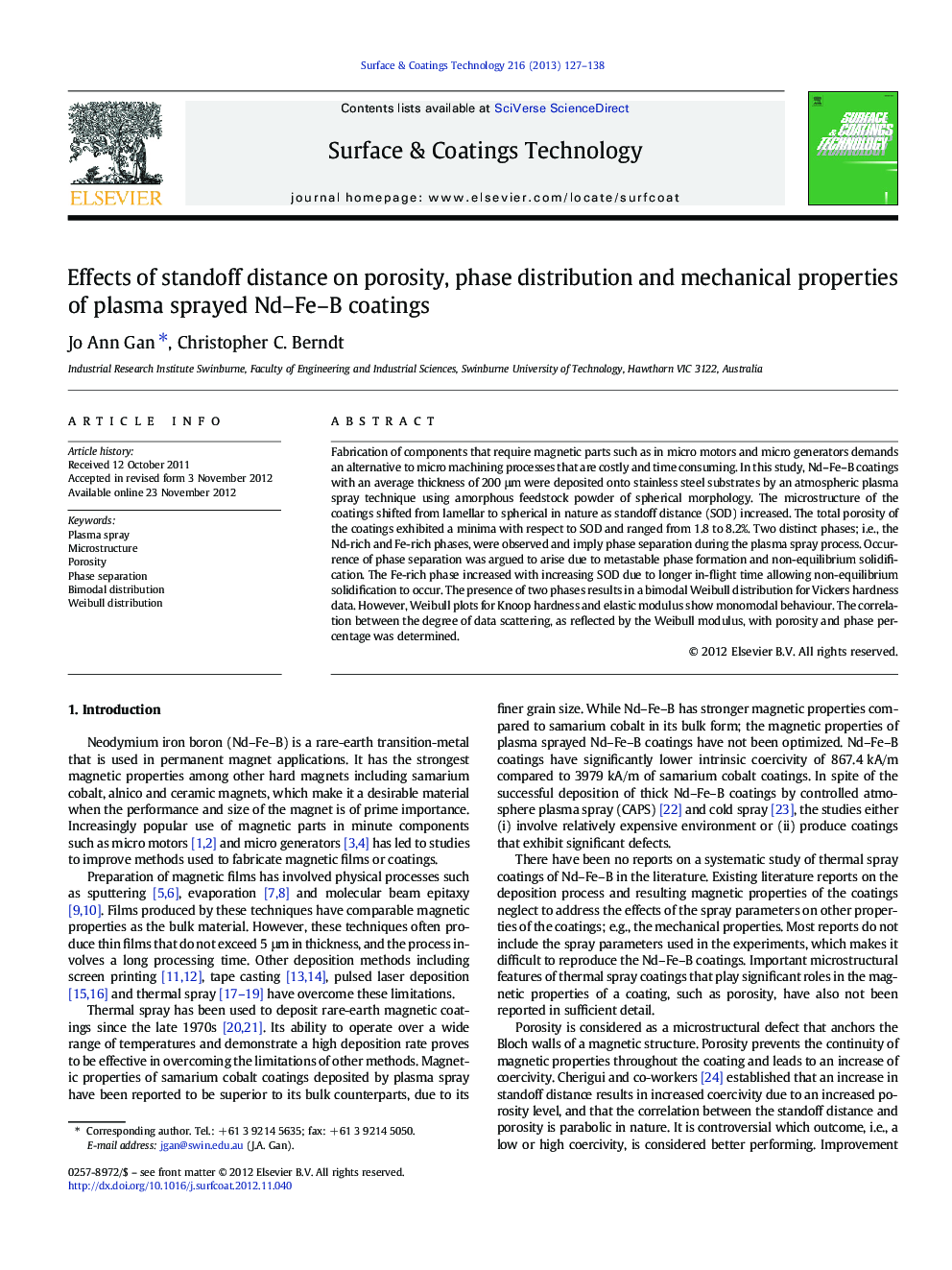| Article ID | Journal | Published Year | Pages | File Type |
|---|---|---|---|---|
| 1658202 | Surface and Coatings Technology | 2013 | 12 Pages |
Fabrication of components that require magnetic parts such as in micro motors and micro generators demands an alternative to micro machining processes that are costly and time consuming. In this study, Nd–Fe–B coatings with an average thickness of 200 μm were deposited onto stainless steel substrates by an atmospheric plasma spray technique using amorphous feedstock powder of spherical morphology. The microstructure of the coatings shifted from lamellar to spherical in nature as standoff distance (SOD) increased. The total porosity of the coatings exhibited a minima with respect to SOD and ranged from 1.8 to 8.2%. Two distinct phases; i.e., the Nd-rich and Fe-rich phases, were observed and imply phase separation during the plasma spray process. Occurrence of phase separation was argued to arise due to metastable phase formation and non-equilibrium solidification. The Fe-rich phase increased with increasing SOD due to longer in-flight time allowing non-equilibrium solidification to occur. The presence of two phases results in a bimodal Weibull distribution for Vickers hardness data. However, Weibull plots for Knoop hardness and elastic modulus show monomodal behaviour. The correlation between the degree of data scattering, as reflected by the Weibull modulus, with porosity and phase percentage was determined.
► Change of coating microstructure from lamellar to spherical with variation in standoff distance. ► 150 mm is the critical standoff distance, below and above which the coating porosity will increase. ► Phase separation occurs due to metastable phase formation and non-equilibrium solidification. ► Vickers and Knoop microindentations show bimodal and monomodal Weibull distribution respectively. ► Weibull modulus is influenced by porosity level and phase content.
